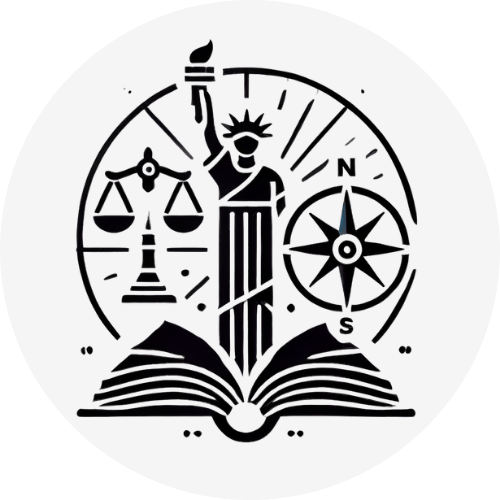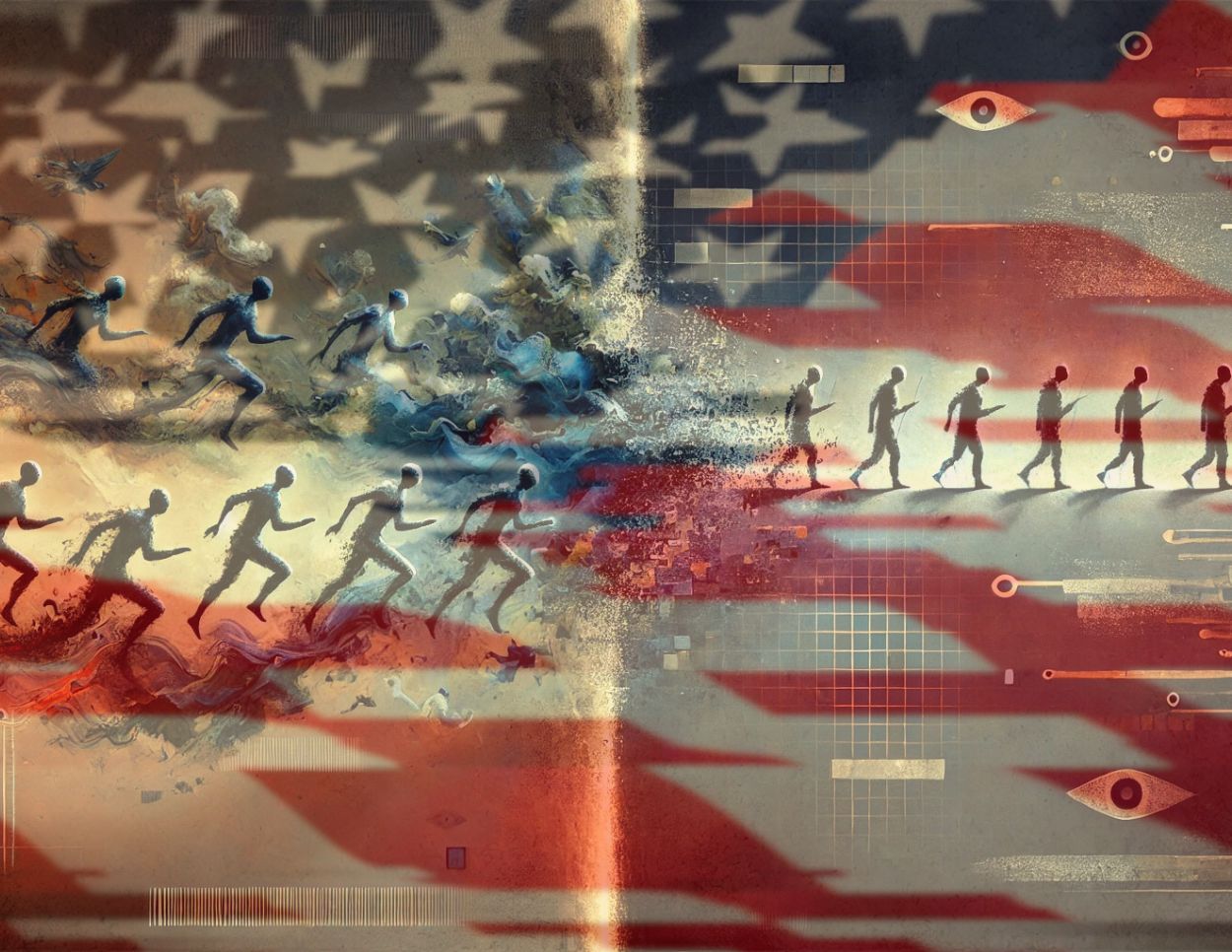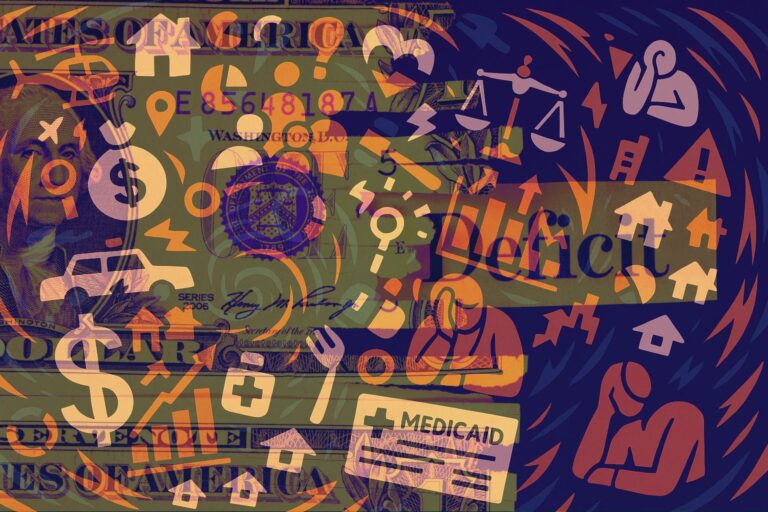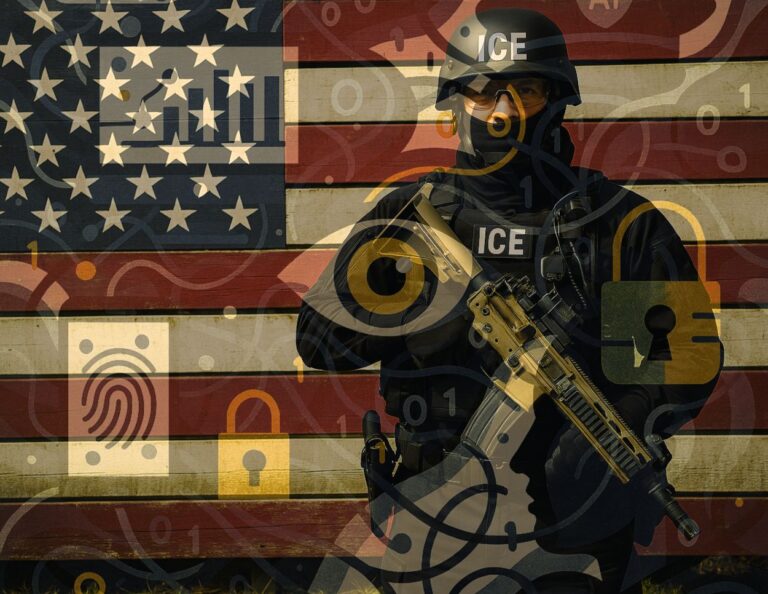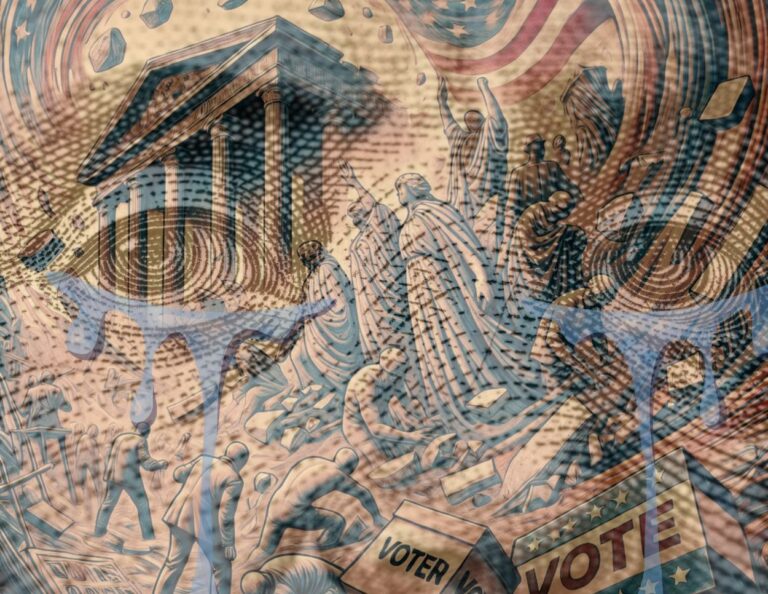The “End DEI” Informant Portal—A Line Crossed
February 28, 2025
For years, even though others have used the label, I’ve rejected calling the Trump regime fascist. Certainly, elements were present, but they were difficult to pin down—primarily rhetorical, largely targeting non-citizens, and lacking formal structure. But with the launch of the “End DEI” informant portal, we have crossed a threshold. This is no longer just rhetoric. This is policy. This is the transition from posturing to practice, from suggestion to enforcement. This is an experiment in fascist governance.
Authoritarian regimes do not need secret police when they can turn ordinary citizens into ideological enforcers. In a functioning democracy, people report crimes—acts that cause harm. In a repressive system, people report beliefs, ensuring ideological conformity rather than justice. When children, teachers, students, parents, and employees are encouraged to inform on others—facilitated by the state—it is no longer about preventing crime. It is about eliminating dissent.
History doesn’t repeat itself, but it often rhymes.
attributed to Mark Twain
- Demonization of nebulously defined groups or ideologies
- Establishing state-run systems of reporting “for the good of society” (pssst… you are here)
- Normalization of fear and self-censorship
- Expansion into active state enforcement
We are now at Step 2. The launch of the “End DEI” portal has institutionalized ideological policing, making it feel routine. The erosion of democratic norms is not sudden—it is incremental. Each step softens public resistance, normalizes repression, and conditions society to accept greater control.
If this trajectory continues, with the increasing use of AI and mass surveillance, ideological policing will not just expand—it will become automated, predictive, and inescapable.
Step 1: Demonization of the “Enemy Within”
Authoritarian movements begin by identifying an ideological or social enemy, framing them as a threat to national stability, children, or traditional values. Once a group is successfully dehumanized, repression becomes easier to justify.
Historical Precedents
- Mao’s China – Intellectuals, teachers, and artists were labeled “bourgeois counter-revolutionaries” accused of corrupting China’s youth.
- Stalin’s USSR – Political dissidents, religious groups, and professionals were branded as “wreckers” or “enemies of the people.”
- Franco’s Spain – Leftists, Catalans, and Basques were condemned as “anti-Spanish communists” who needed to be “purged” to protect Catholic values.
Demonization in the U.S. (2025)
For years, the American right has escalated a “Culture War” against vaguely defined enemies. This campaign has laid the groundwork for ideological persecution by creating a pretext for repression.
- Diversity, Equity, and Inclusion (DEI) programs are framed as “woke indoctrination” and “reverse racism,” casting efforts to address systemic inequality as an attack on white people.
- Teachers and LGBTQ+ advocates are labeled “groomers,” a smear equating them with child predators. “They’re Coming for Your Children” fuels moral panic, portraying LGBTQ+ visibility as inherently predatory.
- Universities are accused of being “breeding grounds for radical leftism and Marxism,” turning higher education into an ideological battleground and denigrating the faculty, staff and students.
- Dissenting political voices are branded as “domestic terrorists,” making it easier to justify surveillance, arrests, and legal action.
- Opposition leaders are labeled “the enemy within,” positioning them as threats to national security rather than legitimate political actors.
- Journalists and the media are described as “the enemy of the people,” echoing historical rhetoric used to delegitimize independent reporting and pave the way for censorship.
- Protesters and activists are dismissed as “the woke mob,” and “domestic terrorists” making it easier to justify surveillance, arrests, and legal action against civil rights movements and legitimate protestors.
- Immigrants, both documented and undocumented, are called “invaders,” accused of “poisoning the blood of our country,” and branded as “illegals,” reinforcing xenophobia and justifying extreme border policies.
From Demonization to Persecution
Demonization goes far beyond just inflammatory rhetoric—it is a strategy. Once a group is portrayed as dangerous, corrupt, or subversive, and dehumanized through denigrating labels, taking action against them becomes not only justified but necessary. This phase sets the stage for arrests, repression, and, ultimately, state-sanctioned violence. That doesn’t always happen – but this is always the first step.
Step 2: Encouraging Voluntary Reporting (“For the Good of Society”)
Once a government defines an ideological enemy, it shifts responsibility to the public, encouraging citizens to “do their part” by reporting deviations. This process is framed not as oppression, but as necessary for safety and national stability. The goal is to make ideological policing feel like a civic duty.
Historical Precedents
- Mao’s China – Students were empowered to report and even attack “counter-revolutionary” teachers and public officials.
- Stalin’s USSR – Families were encouraged to inform on each other, including children reporting their own parents for anti-Soviet sentiments.
- Franco’s Spain – The Catholic Church played a key role in “moral surveillance,” where priests and citizens reported educators, journalists, and activists suspected of leftist leanings.
U.S. 2025: The “End DEI” Portal—A Digital Reporting System
The introduction of a government-backed reporting portal marks a shift from informal rhetoric to institutionalized ideological policing. This system is not about protecting children—it is about state-mandated enforcement of ideological conformity. Not policing actions – policing thought and ideology.
- The “End DEI” portal is a prototype—a test run for normalizing ideological snitching as a state function.
- If successful, this model will expand beyond schools, reaching workplaces, communities, and other public institutions.
- Reporting mechanisms like this do not exist in stable democracies—only in collapsing ones, fascist regimes, and theocratic states.
How Reporting Systems Function in Democracies
In functional democracies, some forms of reporting exist, but they focus on preventing harm—not enforcing ideology. These systems are narrow in scope and provide legal protections against abuse.
- Whistleblower protections – Designed to expose corruption and wrongdoing, ensuring transparency and accountability.
- Crime prevention tip lines – Used for reporting serious crimes, such as trafficking or violence, not political beliefs.
- Harassment & discrimination hotlines – Focused on protecting individuals from abuse, rather than punishing dissenting opinions.
- Academic integrity reporting – Aimed at preventing cheating and fraud, not enforcing ideological compliance.
Where This Leads
When reporting is used to police thought rather than crime, it becomes a tool of repression. The key difference between democratic and authoritarian reporting structures is intent: one is designed to prevent harm, the other to punish deviation.
Previous regimes relied on paper records and in-person denunciations. Today, the U.S. government has a far more efficient model—an online portal integrated with AI-driven monitoring, making ideological enforcement scalable and immediate.
Step 3: The Normalization of Fear and Self-Censorship
Once citizen reporting becomes routine, society begins policing itself. People stop speaking freely—not because they are explicitly forced to, but because they don’t know who they can trust. The risk of being reported is enough to create widespread self-censorship.
Historical Precedents
- Mao’s China – Students and workers performed excessive loyalty rituals, not out of belief, but out of fear that failing to do so would mark them as counter-revolutionaries.
- Stalin’s USSR – Conversations in homes became hushed. Parents whispered around their children, knowing that even a casual remark could lead to their arrest.
- Franco’s Spain – Catalans and Basques abandoned their native languages in public, worried that speaking them would invite accusations of separatism.
U.S. 2025: What Comes Next?
We’re definitely moving into future projection here – and the specifics are hard to pin down until they actually happen, based on history, we know that as fear takes hold, institutions and individuals will automatically adapt—not by force, but by necessity. For example:
- Teachers may resign en masse rather than risk being reported and punished for discussing banned topics.
- Universities and businesses may purge employees before they can be flagged as problematic.
- Students may self-censor, avoiding discussions that could lead to accusations of radicalism and revocation of financial aid or other punitive measures
At this stage, repression becomes self-sustaining. The government no longer needs to silence dissent—fear does the work for them.
Step 4: Expansion into Active State Enforcement
Once self-censorship becomes routine and normalized, repression historically moves from social consequences to state enforcement. What begins as ideological policing through job loss and social ostracization escalates into legal punishment. The government no longer needs to rely solely on voluntary reporting—compliance is compelled through force.
Historical Precedents
- Mao’s China – Teachers and intellectuals were initially removed from their positions. Later, they were sent to re-education camps or publicly executed.
- Stalin’s USSR – Early denunciations resulted in firings. Over time, they led to arrests, forced confessions, and Gulag sentences.
- Franco’s Spain – Censorship and political purges came first. As repression deepened, mass executions followed.
U.S. 2025: Where This Could Lead Next
History shows that once ideological policing is accepted, it expands beyond its original scope.
- Today: Teachers and academics lose jobs for ideological nonconformity.
- Tomorrow: Workplace reporting mechanisms extend into private businesses.
- Next: Corporations, organizations, and entire industries face pressure to purge ideological dissenters from their teams.
If this trajectory follows historical patterns, the next stages could include:
- Expansion of ideological reporting beyond education and into workplaces, media, and public institutions.
- Laws criminalizing “radical indoctrination,” restricting what can be taught, discussed, or even privately believed.
- “Wellness Farms” and “re-parenting” shifting from voluntary ideological correction to state-mandated re-education.
- Detainment or surveillance of individuals deemed “threats to national stability.”
Repression does not remain static. Once the machinery of ideological enforcement is in place, the line between social punishment and legal punishment dissolves. It no longer matters whether enforcement is driven by the government, corporate compliance, or public pressure—once the outcome is the same, the distinction becomes irrelevant.
Step 5: The Theoretical Future—AI-Powered Predictive Policing
What makes 2025 different from past authoritarian movements is not just the rise of ideological policing, but the efficiency with which it can now be enforced. AI, mass data collection, and predictive analytics make ideological surveillance instantaneous, automated, and nearly impossible to resist.
Technology Could Advance Ideological Policing
Past regimes relied on human informants, slow investigations, and physical surveillance. Today, artificial intelligence can monitor, categorize, and target individuals across entire populations in real time.
- Social Media Scraping – AI scans and analyzes online activity, flagging individuals based on their posts, interactions, and affiliations.
- Geofencing & Facial Recognition – Attendance at protests, book purchases, and social circles can be tracked, mapped, and connected to risk profiles.
- Predictive Policing – Individuals deemed “high-risk” by AI modeling could be placed under surveillance or preemptively detained—before they take any action.
- Algorithmic Disenfranchisement – A low ideological “purity score” could limit access to employment, banking, travel, and housing.
AI does not need intent to act. It only needs patterns to predict. Once automated systems determine who is a risk, enforcement is no longer a matter of political decision-making—it becomes a function of code.
We are not there yet, but with each expansion of surveillance technology and suppression of dissent, the gap between possibility and reality closes.
The U.S. Is Following the Playbook of Past Regimes—But Faster and More Efficiently
Repression does not begin with mass arrests or overt authoritarian rule. It starts gradually, with small shifts in norms that people accept as necessary. The pattern is not new, but the tools available today make it far more efficient.
- We are currently at Step 2. Citizen reporting has been introduced, and fear-based self-censorship is taking hold.
- The next steps are historically predictable. As fear grows, mass resignations, preemptive purges, and legal escalation will follow.
- Technology accelerates the process. AI-driven ideological policing will make enforcement automated, invisible, and nearly impossible to escape.
Every purge begins with voluntary reporting. Every police state begins by defining an internal enemy. Every dictatorship rises by convincing the public that repression is necessary for their safety. With the launch of the “End DEI” snitching portal, the U.S. has clearly begun moving down this path.
Sources Include
U.S. Department of Education Launches ‘End DEI’ Portal https://www.ed.gov/about/news/press-release/us-department-of-education-launches-end-dei-portal
‘End DEI’ Portal Submission Form https://enddei.ed.gov/
US launches ‘End DEI’ portal for public complaints about diversity in schools https://www.reuters.com/world/us/us-launches-end-dei-portal-public-complaints-about-diversity-schools-2025-02-28/
Department of Education launches ‘EndDEI’ portal for parents, students, teachers to report discrimination https://nypost.com/2025/02/27/us-news/ed-launches-enddei-portal-for-parents-students-teachers/
As Trump’s deadline to eliminate DEI nears, few schools openly rush to make changes https://apnews.com/article/6cca8440afa62689991d373cc4903a4c
Understanding the Impact of Journalism Inside Authoritarian Regimes https://gijn.org/stories/understanding-the-impact-of-journalism-inside-authoritarian-regimes/
The End of the DEI Era https://www.theatlantic.com/newsletters/archive/2025/01/the-end-of-the-dei-era/681345/
